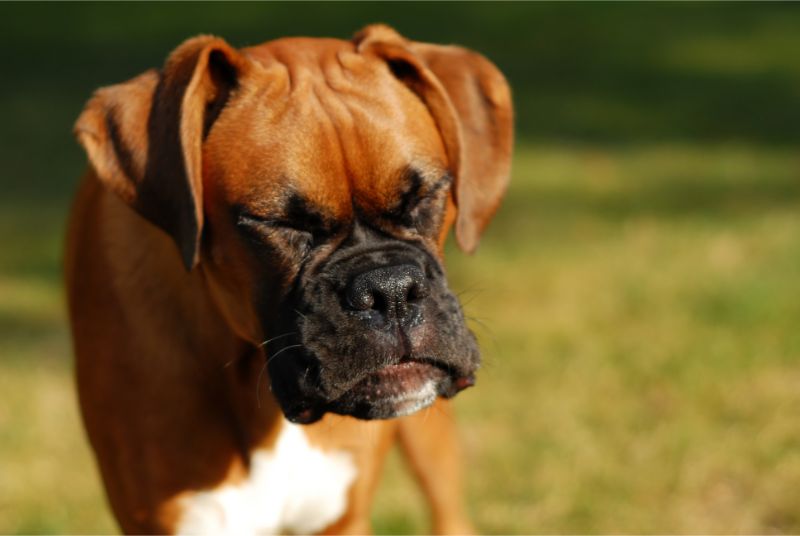
Our pets do so many adorable and endearing things, it would take forever to list them all. Occasionally, however, they surprise or even frighten us with a behavior that comes from seemingly nowhere.
One such phenomenon is the honking, gagging, wheezing sound, known as “reverse sneezing,” which is surprisingly common among dogs and cats (to a lesser degree).
While mostly safe, reverse sneezing in pets can produce an unpleasant and distressing sound. To know when this is normal and when it may indicate a health concern, it’s important that all pet owners learn more about this peculiar behavior.
Reverse Sneezing in Pets
Reverse sneezing in pets, also called “pharyngeal gag reflex” or “inspiratory paroxysmal respiration,” is believed to occur due to an irritation of the nasopharynx (the area behind the nasal cavities and above the soft palate). Anything can trigger a reverse sneeze, such as eating or drinking, viruses/bacteria, pollen, strong odors, exercise/leash-pulling, or foreign objects caught in the nose or throat. The reverse sneeze acts as a way to expel the irritant out of the nasopharynx, much like a regular sneeze clears the nasal passages of dust or debris.
A Deeper Issue
The occasional bout of reverse sneezing in pets is usually nothing to worry about, and some pets (especially short-nosed breeds) are simply more prone to it than others. However, persistent or excessive bouts of reverse sneezing warrant a trip to the veterinarian to rule out medical issues, such as:
- Allergies
- Nasal mites (parasites that infest the nasal passages of dogs)
- Laryngeal paralysis (more common in older pets)
- Tumors or growths in the nose, throat, and nearby structures
- Foreign body obstruction (such as grass awns)
- Collapsing trachea (a condition more common in smaller dogs)
- Asthma in cats
Getting Help
If you’re concerned about your pet’s reverse sneezing, try capturing it on video and bringing it in for us to see. It can be difficult (or impossible) to trigger a sneezing episode in our office, so recording it can help us to diagnose your pet and develop an effective treatment plan. Depending on the cause of your pet’s reverse sneezing, we may discuss medications, surgery, allergy treatments, and home care options.
Ensuring your pet’s health and comfort is our top priority. Please don’t hesitate to contact the staff at West Park Animal Hospital for more information or to schedule an appointment for your pet.
The post Snork, Honk, Wheeze: Is Reverse Sneezing in Pets Normal? appeared first on West Park Animal Hospital Blog.

